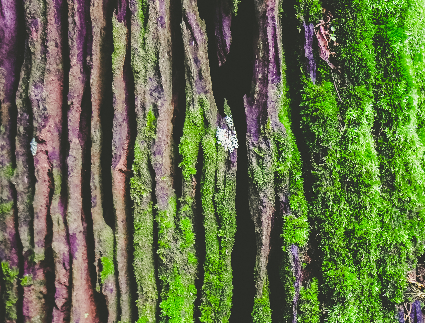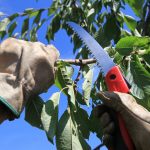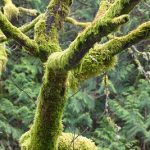Why Does Moss Grow on Trees?
Moss is a fascinating and often misunderstood plant that you might have noticed growing on the trunks and branches of trees in your yard. While it can add a certain rustic charm to your landscape, many homeowners wonder if moss is harmful to their trees. So, why does moss grow on trees?
Moss on trees is a common sight, especially in areas with damp and shady conditions. For homeowners and nature enthusiasts, understanding why moss grows on trees and its implications is crucial for tree health and maintenance. In this blog, we will look at why moss grows on trees, whether it is harmful, how to remove it, and preventive measures you can take.
What is Moss?
Mosses are small, non-vascular plants that thrive in moist, shady environments. They don’t have roots like most plants but instead have structures called rhizoids that anchor them to surfaces such as tree bark. Mosses absorb water and nutrients directly through their leaves, making them quite different from the trees they grow on.
Why Does Moss Grow on Trees?
 Moss grows on trees for a few reasons:
Moss grows on trees for a few reasons:
- Moisture: Moss thrives in damp environments. If your trees are in an area that stays wet or receives little sunlight, moss is more likely to grow there.
- Shade: Moss prefers shady conditions, so if your trees create a lot of shade, it provides the perfect habitat for moss.
- Bark Texture: Rough bark provides an ideal surface for moss to cling to and spread. Smooth bark trees might see less moss growth.
Is Moss Harmful to Trees?
Generally, moss itself is not harmful to trees. It doesn’t take nutrients from the tree or directly damage its structure. However, heavy moss growth can sometimes indicate an underlying issue, such as poor air circulation, excess moisture, or shading. In some cases, moss might hold moisture against the tree’s bark, potentially leading to rot, but this is more of an indirect effect.
How to Remove Moss from Trees
If you decide to remove moss from your trees, you can gently scrub the moss off with a soft brush. This is best done during dry weather–be careful not to damage the tree bark. You can also use a water and baking soda solution, mixing one part baking soda with four parts water. Spray this solution on the moss–baking soda increases the pH, creating an unfavorable environment for moss.
Lime sulfur spray is a commercial option that can be effective in removing moss. Follow the manufacturer’s instructions for safe use. Another commercial solution is copper sulfate, but it must be used with caution as it can be harmful to other plants and aquatic life. In most cases, we would recommend not using chemicals on your tree for moss.
Steps to Prevent Moss on Trees
Preventing moss growth is all about altering the environment to make it less favorable for moss. Here are some steps:
- Prune Your Trees: Increase sunlight and air circulation by pruning back overgrown branches.
- Improve Drainage: Ensure the area around your trees is well-drained to reduce moisture levels.
- Regular Maintenance: Keep your trees healthy through regular inspections and maintenance. Healthy trees are less likely to have excessive moss growth.
- Fertilize Properly: Sometimes, moss growth can be a sign of nutrient imbalance. Proper fertilization can help maintain the health of your trees and reduce moss.
FAQs About Moss on Trees
Why does moss grow on trees but not on other plants in my yard?
Moss grows on trunks and sides of trees because they provide a stable, moist, and shaded environment, which moss prefers. Other plants may not offer the same conditions.
Is moss growth a sign of poor tree health?
Not necessarily. While heavy moss growth might indicate environmental conditions that are less than ideal for your tree, moss itself doesn’t harm the tree.
Can I use household products to remove moss from trees?
Yes, a water and baking soda solution can be effective. Always test a small area first and avoid harsh chemicals that could harm your tree or other plants.
How often should I inspect my trees for moss?
Inspect your trees at least twice a year, in spring and fall, to catch any moss growth early and address it promptly.
Why Choose Inexpensive Tree Care?
At Inexpensive Tree Care, we understand the importance of maintaining the health and beauty of your trees. Our expert arborists are trained to inspect, prune, and, if necessary, remove trees with the utmost care and professionalism. Whether you’re dealing with moss growth, need regular maintenance, or have an emergency, our team is ready to help.
We offer a comprehensive range of services to keep your trees healthy and your property safe. From routine pruning and inspections to emergency tree removal, Inexpensive Tree Care is committed to providing top-notch service at affordable prices. Our arborists use the latest techniques and equipment to ensure the best outcomes for your trees and your landscape.
Don’t let moss or any other tree issues worry you. Contact Inexpensive Tree Care today for a consultation and let us help you keep your trees in great shape all year round. With our expertise, your trees will continue to be a beautiful and integral part of your home’s landscape.




